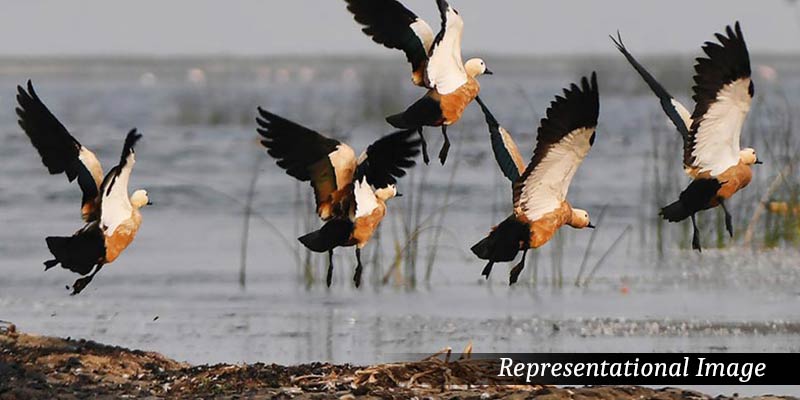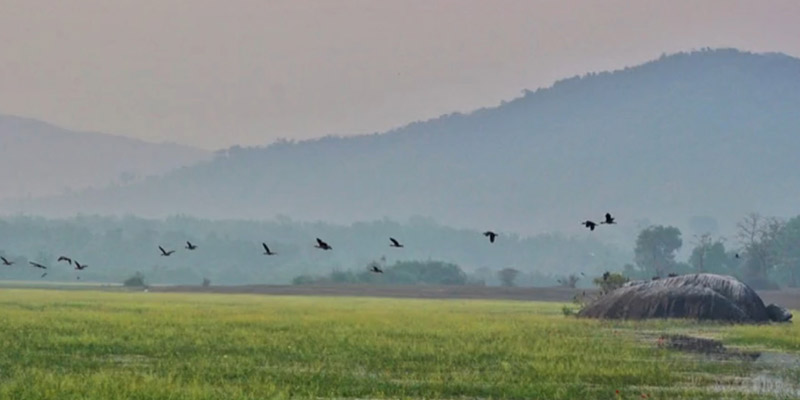- India
- Mar 24
Explainer - What are wetlands?
• The total number of wetlands notified under Wetlands (Conservation and Management) Rules, 2017 in the country is 102, Minister of State for Environment, Forest and Climate Change Kirti Vardhan Singh said in a reply in Rajya Sabha.
• However, there are over 2 lakh wetlands in the country.
• The Ministry of Environment, Forest & Climate Change (MoEF&CC) has notified the Wetlands (Conservation and Management) Rules, 2017 under the provisions of the Environment (Protection) Act, 1986 as regulatory framework for conservation and management of wetlands across the country to conserve, manage and maintain the ecological character of the wetlands.
• The Rules restrict the activities, like solid waste dumping, discharge of untreated wastes and effluents from industries, cities, towns, villages and other human settlements.
• The state/Union Territories Wetland Authorities have been constituted and powers for notification of wetlands and implementation/enforcement of these Rules have been delegated to the respective state governments and UT administrations.
What are wetlands?
• Wetlands are ecosystems, in which water is the primary factor controlling the environment and the associated plant and animal life.
• A broad definition of wetlands includes both freshwater and marine and coastal ecosystems, such as all lakes and rivers, underground aquifers, swamps and marshes, wet grasslands, peatlands, oases, estuaries, deltas and tidal flats, mangroves and even coral reefs. Fish ponds, rice paddies and salt-pans are man-made wetlands.
• These lands are critical to people and nature, given the intrinsic value of these ecosystems, and their benefits and services, including their environmental, climate, ecological, social, economic, scientific, educational, cultural, recreational and aesthetic contributions to sustainable development and human wellbeing.
• Wetlands are a major source of water and our main supply of freshwater comes from an array of wetlands which help soak rainfall and recharge groundwater.
• They sustain humanity, exemplified by rice grown on wetland paddies, a staple for three billion people, contributing to 20 per cent of global food.
• Additionally, wetlands act as natural shock absorbers, mitigating rainfall impacts and lowering flood and storm surge risks.
• Although they cover only around 6 per cent of the Earth’s land surface, 40 per cent of all plant and animal species live or breed in wetlands.
• Wetland biodiversity matters for our health, food supply, tourism and jobs.
• Wetlands are vital for humans, for other ecosystems and for our climate, providing essential ecosystem services, such as water regulation, including flood control and water purification.
• More than a billion people across the world depend on wetlands for their livelihoods – that’s about one in eight people on Earth.
Why are they in danger?
• Wetlands are among the ecosystems with the highest rates of decline, loss and degradation.
• Indicators of current negative trends in global biodiversity and ecosystem functions are projected to continue in response to direct and indirect drivers, such as rapid human population growth, unsustainable production and consumption and associated technological development, as well as the adverse impacts of climate change.
• Wetlands are disappearing three times faster than forests and are Earth’s most threatened ecosystem. In just 50 years, since 1970, about 35 per cent of the world’s wetlands have been lost.
• Depending on the amount of sea-level rise caused by the climate crisis, 20-90 per cent of current coastal wetlands, which sequester carbon up to 55 times faster than tropical rainforests, may be lost by the end of the century. Wetlands – important stopovers for migratory birds – have also lost more biodiversity than other terrestrial and marine ecosystems.
• Human activities that lead to loss of wetlands include drainage and infilling for agriculture and construction, pollution, overfishing and overexploitation of resources, invasive species and climate change.
• This vicious cycle of wetland loss, threatened livelihoods, and deepening poverty is the result of mistakenly seeing wetlands as wastelands rather than lifegiving sources of jobs, incomes, and essential ecosystem services.
• A key challenge is to change mindsets to encourage governments and communities to value and prioritise wetlands.
How do wetlands combat climate change?
• Wetlands are a natural solution to the era-defining global threat of climate change. They absorb carbon dioxide to help slow global heating and reduce pollution, hence have often been referred to as the “kidneys of the Earth”.
• Peatlands, a particular type of vegetated wetland, alone store twice as much carbon as all the world's forests combined. But, when drained and destroyed, wetlands emit vast amounts of carbon.
• Wetlands also provide a buffer against the impacts of floods, droughts, hurricanes and tsunamis, and build resilience to climate change.
What is the Ramsar Convention?
• The Ramsar Convention is an international treaty signed by 172 countries to protect wetlands.
• It is named after the city in Iran where it was signed, and it began with 18 countries in 1971.
• The convention is one of the oldest inter-governmental accords for preserving the ecological character of wetlands. Also known as the Convention on Wetlands, it aims to develop a global network of wetlands for the conservation of biological diversity and for sustaining human life.
• It is one of the largest international agreements, after the Convention on Biological Diversity (CBD, 196 countries) and the UN climate agreement (UNFCCC, 197 countries).
• The Ramsar List is the world’s largest network of protected areas.
• There are over 2,400 Ramsar Sites around the world. The first Site was the Cobourg Peninsula in Australia, designated in 1974. The largest Sites are Rio Negro in Brazil (120,000 sq km), and Ngiri-Tumba-Maindombe in the Democratic Republic of Congo and Queen Maud Gulf in Canada. These Sites each cover over 60,000 sq km.
• The signatory countries promise to make inventories of their Ramsar Sites and to develop management plans. These management plans include the sustainable use of the many other functions of wetlands, such as food production, water storage and recreation.
Manorama Yearbook app is now available on Google Play Store and iOS App Store


